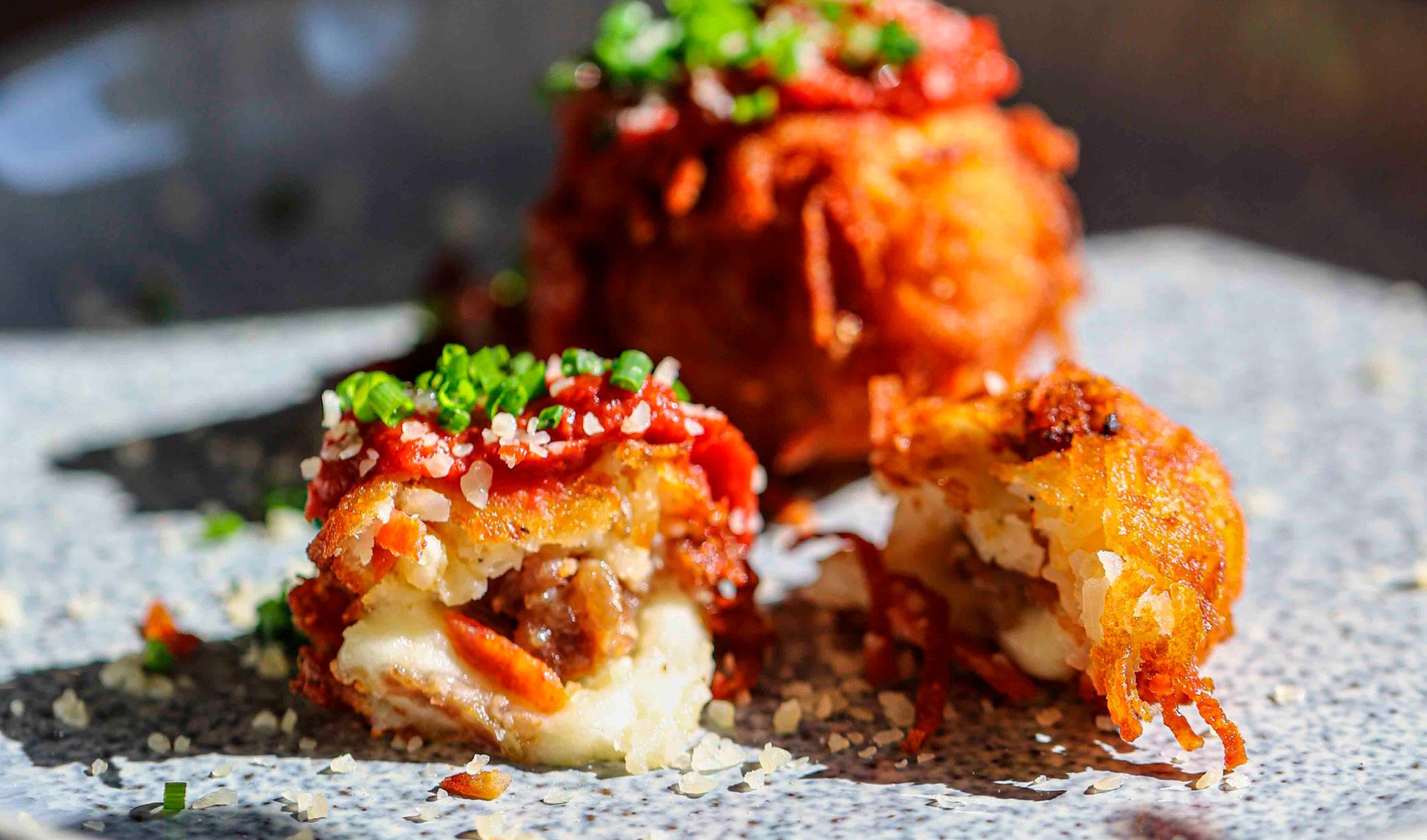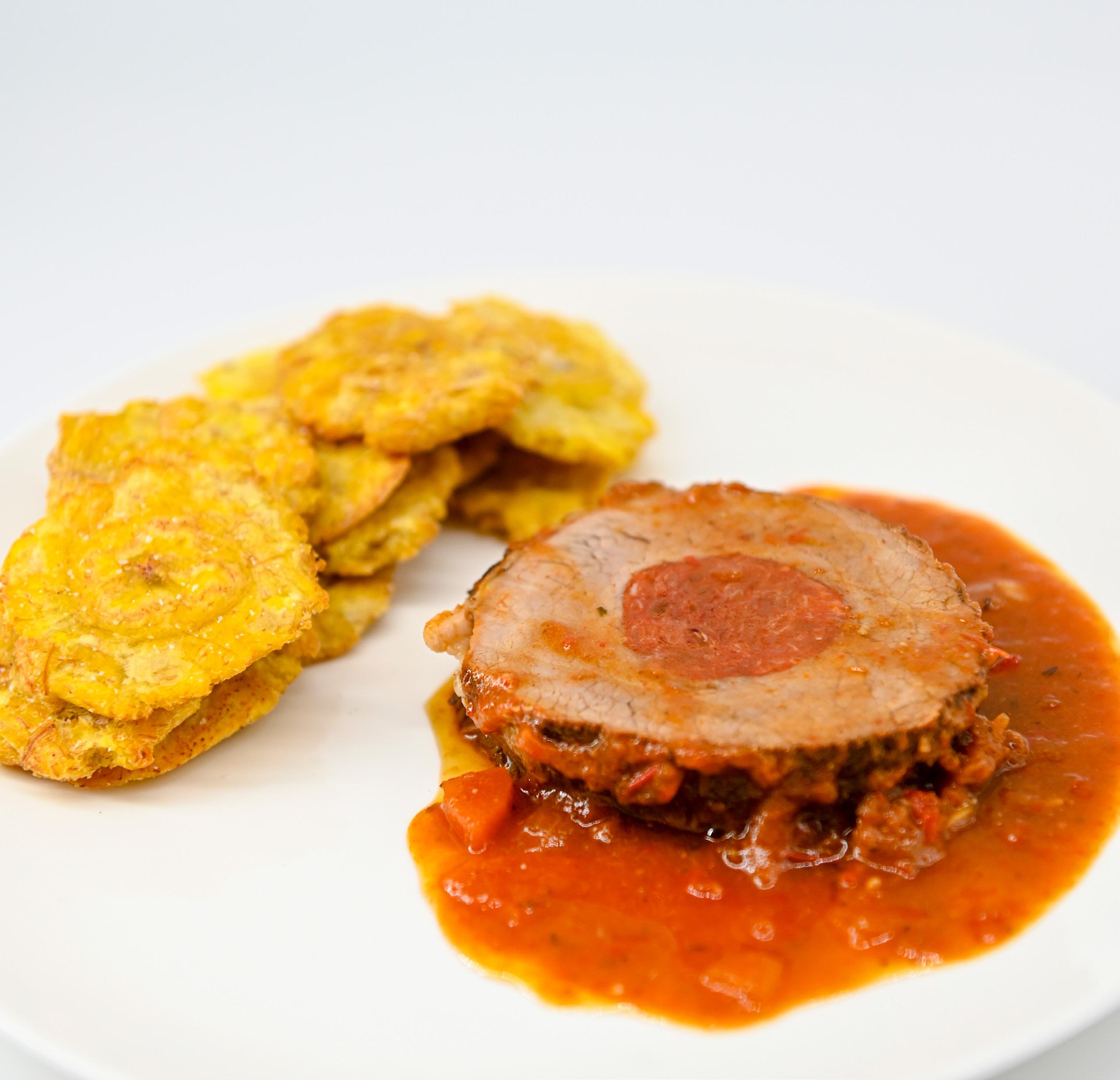
13 minute read
Plight of Packaging
from National Culinary Federation (Jan/Feb 2021)
by National Culinary Review (an American Culinary Federation publication)
THE PLIGHT OF PACKAGING
Restaurants and foodservice operations are looking for more environmentally friendly products, especially as takeout increases during the pandemic by Amanda Baltazar
Put your ear to the ground and listen. The rumblings you’re hearing are from the movement to reduce packaging waste, with much of the clamor coming from today’s biggest groups of consumers: millennials and Gen Z, according to New York-based market research and consulting agency Kantar.
The U.S. Environmental Protection Agency has reported that containers and packaging constitute 30% of all waste. Most packaging is not recycled or recyclable, so it instead makes its way to the landfill or is incinerated, creating noxious pollution. Not only that, it’s harming and killing ocean creatures as they get entangled in or consume plastic — sometimes before we consume them.
In the past 10 months, the problem has become much worse. Many restaurant dining rooms closed, and consumers have been limited to delivery or takeout, which meant restaurants were using far more packaging.
And the timing was unfortunate for the environment, as restaurants had been starting to move toward reusable containers and compostable and recyclable packaging.
Coronavirus can be blamed for a lot of the increase in packaging waste, but there is a silver lining, says Pamela Goodfellow, director, retail insights, at Kantar. “With [everyone] spending so much more time at home, we’ve become much more aware of the garbage that results from takeout restaurant meals, which we perhaps didn’t so much realize when we were in offices,” she explains.
Before the pandemic, Chef Ryan Ratino, owner of Bresca in Washington, D.C., eschewed plastic completely, except for plastic wrap. He even uses metal tasting spoons, which keeps around 125,000 plastic spoons out of the garbage annually, he says.
But he’s had to make concessions recently. With Bresca’s dining room closed, he switched to takeout,
but has yet to find a good packaging solution. Fully compostable containers would cost about $4 for a $40 meal, so he’s gone to his second-best option: packaging with a compostable base and a plastic lid, which costs about $2 per meal.
“It’s proven to be very challenging, and [our staff has] talked about this multiple times,” he says. “We’re trying to stick with our core values regardless of the situation around us.”
Chef Aaron Adams is also finding it difficult. He’s temporarily closed his restaurant, Farm Spirit, in Portland, Oregon, and is only operating his retail business, Fermenter, which sells products like kimchi, kombucha and vegan charcuterie.
He sells his products in mostly paper-based ecofriendly containers and reusable glass jars; customers pay a $2 deposit for the latter. When they return the container, that deposit goes toward their next purchase. Before the current crisis, Chef Adams sold everything in reusable containers. Customers who didn’t want to pay the deposit could use plastic for a charge, which he would donate to the organization Zero Foodprint for carbon offsets.
And while he has come across reusable packaging options throughout his lengthy research, he says there’s always a sticking point: It comes from too far away, which adds to the overall costs due to pricier shipping, or it doesn’t stack, or it’s simply too expensive. And he has to consider the other costs of reusables: He needs a dishwasher and a person to operate it. The costs to him, he says, are far greater than using plastic.
Like Chef Ratino, Chef Adams sometimes questions what he does. “It’s hard when you see what the major corporations are doing. But at the same time, I want to be responsible, and there are customers who really care about these issues.”
REUSABLES TO GO
Marc Schechter and Danny Stoller opened Square Pie Guys in San Francisco in July 2019 and have been working with startup Dispatch Goods since this past summer. When customers order from the restaurant, they’re given the option of reusable containers (for $1.50 more per meal). When they’ve finished their meal, they contact Dispatch Goods to pick up the packaging.
So far, between 3% and 4% of Square Pie customers are opting for the reusable packaging,


Reusable containers from Dispatch Goods in San Francisco, California.
which in the second half of September translated to 172 pizza boxes, 155 containers and 200 bags saved from the landfill. “That’s a big win,” Stoller says.
Lindsey Hoell launched Dispatch Goods in October 2019, partnering with restaurants in downtown San Francisco. The company put return bins for disposables in five nearby offices, and was preparing to ramp up when March brought COVID-19 to the city.
She rethought her business plan, then relaunched this past summer with a handful of restaurants — now 20 — using the same model that she uses for Square Pie Guys. In its first year, she says, Dispatch Goods has saved more than 7,000 containers from the waste stream.
Now, a Dispatch Goods van picks up the reusable containers, visiting certain neighborhoods on certain days. Because the routes are optimized, this is still a more ecofriendly option than non-reusable containers, even with the carbon emissions of the van, Hoell says. She plans to transition to electric vans eventually.
So far, Hoell’s found that around 10% of customers select the reusable containers, but her goal is 50% or more. Next will be memberships to Dispatch Goods; customers would pay $20 a month, which covers everything — the cost of the reusables plus the pickup costs (pickup costs are currently covered by the $1.50 surcharge). This, she believes, will be the “best way to get people on board.”
Hoell’s hopeful for the future, and some San Francisco restaurants are coming up with their own ideas, too. Zuni Café


is building the cost of disposables into its meals and soon will switch to 100% disposables; another, The Morris, is launching Dispatch Good's reusable program at $5 per order.
It’s not just packaging that’s an issue for the environment; cutlery is also a problem. Just Salad, which is pioneering a reusable bowl program that saves 75,000 pounds of single-use plastic annually, debuted a utensil opt-in program on its own online ordering platform in the spring.
“We wanted to look at reducing waste before it happens,” says Just Salad’s Chief Sustainability Officer Sandra Noonan. Now, instead of customers opting out of plastic cutlery, she says, they have to opt in by checking a box in their order. “We’re reversing the default, and we’re trying to lead a cultural shift in which utensils are not an expectation,” she explains.
Since this program started, Just Salad has seen an 88% reduction in cutlery opt-in on its own food ordering platform
NON-COMMERCIAL LOCATIONS ARE IMPACTED, TOO
Moves like these are not just happening in the restaurant industry; they’re also occurring in the non-commercial foodservice business.
At Perth Amboy Technical High School in Perth Amboy, New Jersey, culinary arts instructor Stephen Moir eliminated Styrofoam and disposable plates and cutlery in September 2015 and switched to reusable products. Although they cost close to $1,000, "The lifespan of non-disposable plates, silverware and cups are 10 years, and the outlay of initial costs is recovered within two years,” he says. Due to COVID-19, he’s been forced to switch, temporarily, to compostable takeout containers, which cost about 4% more.
OhioHealth, a large not-for-profit based in Columbus, Ohio, identified sustainability as one of its four top initiatives in its five-year plan. In May, OhioHealth decided to stop using foam products for its packaging needs, and implemented the move in August at two hospitals, Riverside Methodist Hospital and Grant Medical Center, with more to follow.
The biggest challenge, says Lisa Roberson, senior national director of wellness and sustainability for Morrison Healthcare (the contractor that runs the foodservice for OhioHealth), which was the compartmentalized clamshells “because there’s not a suitable replacement for them.”
Another non-commercial example: The University of Vermont in Burlington opened this fall with a new mobile app; all food ordered through it is provided in reusable containers.
The university’s foodservice contractor, Sodexo, created 20 collection stations around the campus where students can return the containers. In the first six weeks, the contractor saw


Just Salad's online ordering app offers an opt in or opt out for plastic utensils to cut down on waste.
18,000 containers go through the system, “which is amazing when you think of the packaging waste that would be,” says Lara Seng, Sodexo’s sustainable living manager, office of corporate social responsibility.
What’s important, she points out, is making the return of the items as convenient as possible.
She expects to see a return on the $25,000 investment in the reusable products in about six months and admits it hinges on students returning containers in a timely manner; otherwise, Sodexo has to buy more. And the cost doesn’t just come from purchasing the containers, Seng points out. Sodexo also has to pay to wash them and had to buy drying racks and storage and collection bins.
Sodexo’s young customers aren’t the only ones buying into reusables. The contractor also switched to reusable containers at Asbury Communities, a group of retirement homes headquartered in Frederick, Maryland.
The eight participating retirement homes, which began room delivery in response to COVID-19, are still delivering some meals. They shifted to reusable to-go containers in May and recovered the cost of the investment within three months, Seng explains.
Sodexo launched the program strategically, she says, with messaging, FAQs and multiple collection bins around the community. Residents also saw two immediate benefits of the reusable packaging: They were less flimsy and kept the food warmer.
From boosting the bottom line, keeping food intact and helping to take care of the planet, the benefits of non-disposable packaging are becoming clearer to all of us — those in foodservice, and the consumers using these products.
Amanda Baltazar is a food and beverage reporter based in the soggy Pacific Northwest, who writes for and about chefs and restaurant operations.

FERMENTING FOR THE FUTURE


Maximizing vegetable prep reduces waste and expands the diversity of our food system
By Jamie Simpson executive chef, Culinary Vegetable Institute at The Chef’s Garden, Huron, Ohio
As a chef, you know how buzzwords come and go in the culinary world — and food waste concepts have risen to the top of today’s conversations. For the Culinary Vegetable Institute (CVI), though, waste management is not a marketing phrase or a bandwagon ploy to garner attention. It is a way of living.
We’ve definitely had to grapple with food waste at the CVI. Here’s why. We’re not a hotel or inn, having just one suite available to rent. We’re not corporate chefs, although we work for The Chef’s Garden. We’re not a banquet hall, although we host weddings, anniversaries and birthdays. What we are is a place for forward-thinking, likeminded food and beverage professionals to explore the future of food, often by examining the past.
The challenge with this model? Waste. Without a regular outlet for overage, waste is inherent. Try opening your dining room only once a month, Chef.
As part of our solution, we preserve vegetables for flavor, texture and sustainability (which includes optimizing inventory and managing food cost), and this also allows us to simply watch biology happen in real time. Preservation, though, is something much greater than a method of reducing food waste.
To explain what I mean, here’s a section from Michael Pollan’s book, “Cooked: A Natural History of Transformation,” that has stuck with me:
“To ferment your own food is to lodge a small but eloquent protest — on behalf of the senses and the microbes — against the homogenization of flavors and food experiences now rolling like a great, undifferentiated lawn across the globe. It is also a declaration of independence from an economy that would much
prefer we remain passive consumers of its standardized commodities, rather than creators of idiosyncratic products expressive of ourselves and of the places where we live …”
In other words, fermenting food allows chefs to be at the front of a culinary revolution.
Imagine a world where ketchup and mustard taste exactly the same everywhere you go — and you’ll quickly realize that’s called America (don’t yell at me, Chef! The big-name brands still have a place in my heart). What I’m saying is we’re suffering from a gross lack of diversity and substance in our food. Our way of living and eating has changed faster than our genetic makeup can cope with it. We are sicker, fuller and hungrier, all at the same time—and, thanks to medical innovations, we get to live like this longer.
Our food is largely homogenous from coast to coast and border to border in the U.S. — and one way CVI has broken this sameness up is by tackling one of this industry’s biggest problems, or should I say opportunities: waste. We’ve found valuable ways to make the most of our inventory and, in turn, we have created an ecosystem of flavors, textures and aromas that may only be possible through fermentation.
Fermentation doesn’t have to happen in an attic or in a hole in your yard. It doesn’t have to happen on a counter for six weeks, either. We utilize our kitchen and the equipment on hand to produce highs and lows on the spectrum of flavor. We’ve modified rice cookers to hold ingredients at 130 degrees Fahrenheit for months, which slowly caramelizes sugars present in vegetables while keeping them well above pasteurization temperatures. We do short, overnight ferments and dehydrate the results fully for seasoned powders or rubs.
With a clear understanding of pH, salt-level ratios, time and temperature, chefs can resume cooking in ways our society has forgotten. Our declaration of independence from homogeneity will allow us to wean ourselves from broadline “food” distributors and lean into products that are expressive of the seasons, ourselves, and the place we call home.
In January, the CVI is offering an online Preservation Workshop where we can celebrate the past by demonstrating culinary techniques derived from thousands of years of trial and error — many of which are gone from today’s kitchens. We’ll also be celebrating the future by bringing this concept into tomorrow and beyond through the power of the internet, which will allow us to host this event safely while reaching a wider audience than we would by hosting in Huron, Ohio. Learn more at culinaryvegetableinstitute.com.
Baby steps like preservation and fermentation, and others we plan to present in our workshop, will ultimately build a better environment for our industry. Our diners could leave healthier than when they arrived, and our restaurants can better manage their food costs and waste. The future of our industry rests in our collective hands.


Above: The Chef's Garden in Huron Ohio. Below: Farmer Lee Jones (left) and Executive Chef Jamie Simpson (right)








